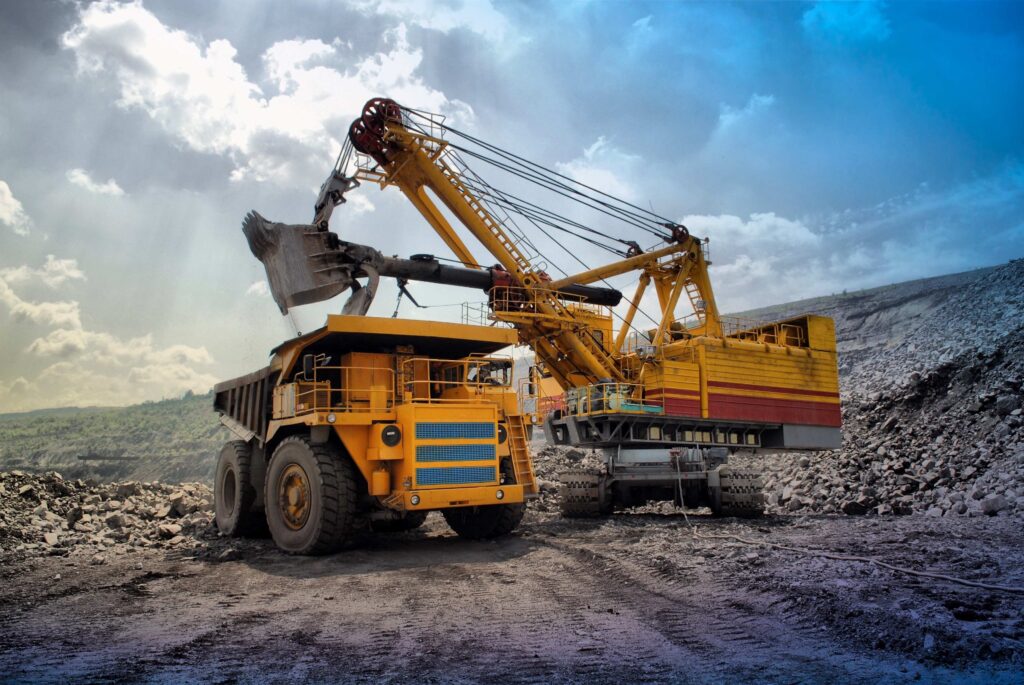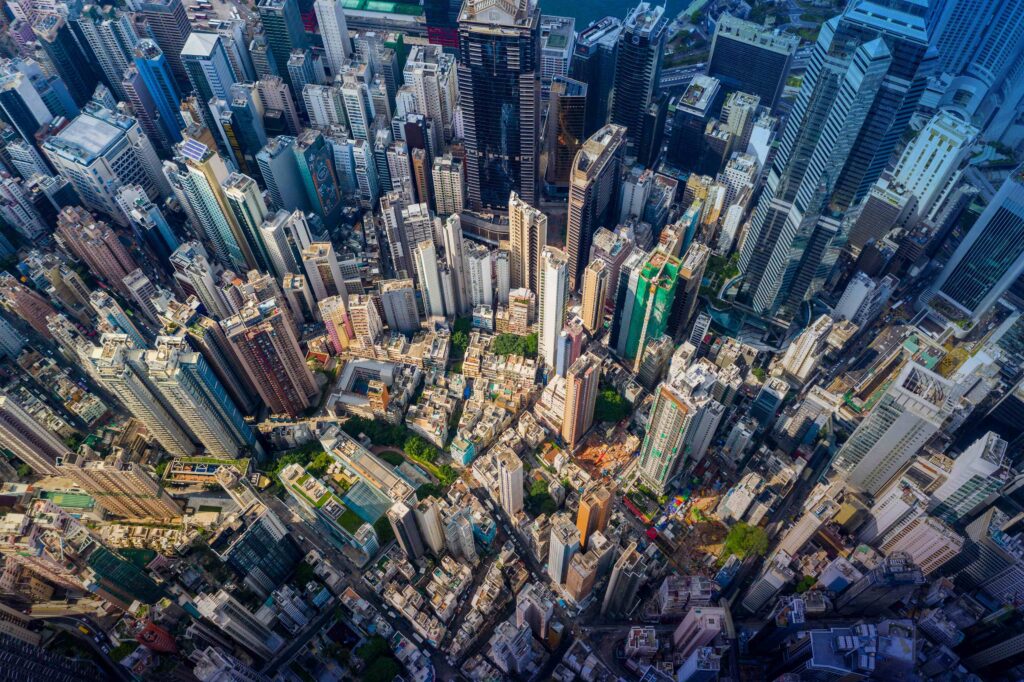Construction is one of – if not the – oldest industries worldwide. Approximately 30 billion tonnes of concrete are used in a year, which is three times as much as 40 years ago. In addition, concrete is expected to contribute 12 percent of global greenhouse gas emissions by 2060. As a result, companies have begun implementing the usage of new sustainable processes and products. Traditional concrete, the often-pollutive product made from cement and other raw materials, has historically been pollutive. Concrete production is a significant source of CO2 emissions, with approximately 900kg emitted for every ton of cement used. Because of this, concrete has been the subject of new environmentally friendly efforts.
Creating sustainable concrete – or green concrete alternatives – of any sustainable building material that matches the qualities of existing options is tricky. It needs to be durable, strong, resistant to fire, economical – the list goes on. However, companies in the construction industry are making efforts to implement substitutes for concrete, including the raw components that make it up and the processes by which it’s produced and shipped. In the future, “sustainable concrete” might not sound so much like an oxymoron.
What is traditional concrete, after all?
We often hear terms like concrete, cement, pavement and asphalt thrown around interchangeably, though they’re different things.
Traditional concrete is made of cement, which is produced by heating a material – typically limestone and clay – to a very high temperature, creating a coarse material called clinker. The clinker is then ground to create Portland cement, which is seen as the industry standard. It also produces significant amounts of carbon emissions in the process, releasing nearly a pound of CO2 for every pound of cement made. The cement serves as a binder with water and other materials to create concrete, which is mixed and shipped around the world, heralded as one of the best building materials that exists. It’s durable, strong and long-lasting. As a “dirty” material in such high demand, concrete is a ripe target for being made more sustainable.
Is there a way to make concrete sustainable?
The process for doing so starts – unsurprisingly – with cement.
While cement is the building block for traditional concrete, it isn’t itself a naturally occurring material. It’s created by combining raw components which must be mined. Mining, like construction, is a necessary industry that’s currently undergoing a green revolution. Even though there aren’t ways to make concrete itself sustainable, the industry is looking at ways to reduce the emissions from producing cement and even finding ways of changing the makeup of cement so that it’s less carbon-intensive. Additionally, supplementary materials are also being used to reduce carbon. For example, fly ash, slag, and volcanic ash are all waste products that can be used to replace some of the cement. Another alternative is recycling existing concrete to divert it from the landfill. While there isn’t an exact answer for making concrete sustainable, the industry is looking at many different alternatives that can make the industry more sustainable.

Five types of sustainable concrete alternatives
While there isn’t an industry standard for green concrete, many are trying out these sustainable alternatives to build a greener future.
Green concrete
Green concrete is an eco-friendly alternative to traditional concrete. It is made from recycled materials and designed to reduce carbon emissions and energy consumption. Green concrete is used in construction projects and not only supports environmental sustainability but also offers comparable durability and strength to traditional concrete.
Aggregate replacement
Aggregate replacement, such as papercrete, is an innovative approach to sustainable construction. It utilizes recycled paper as a component in creating lightweight yet strong building materials. This method not only helps reduce waste but also offers an eco-friendly concrete alternative to traditional concrete.
Ashcrete
Ashcrete is an innovative construction material made from fly ash, a byproduct of coal combustion. It offers a sustainable alternative to traditional concrete. This eco-friendly option not only effectively utilizes waste materials but also contributes to reducing the carbon footprint of construction projects.
Micro silica
Micro silica, also known as silica fume, is a byproduct of producing silicon and ferrosilicon alloys used to enhance the strength and durability of concrete. Its fine particles provide a high degree of pozzolanic activity, significantly improving the mechanical and durability properties of concrete, making it an essential component in high-performance and sustainable concrete solutions.
Bamboo
Bamboo is renowned for its rapid growth and strength, making it an increasingly popular choice for substitutes for concrete and eco-friendly products. Its versatility and natural properties also contribute to its use in various applications, from construction and furniture to textiles and culinary tools.
Why isn’t there a widely used concrete alternative?
In other industries, when a significant component is identified as a high emitter of carbon or heat, it’s generally possible to create a more sustainable option. Take electric vehicles, for example. They achieve the same functionality as their gasoline-powered, combustion engine-outfitted counterparts. While their range might be less than some traditional vehicles, it’s safe to say they get the job done.
But concrete doesn’t really have a comparable solution.
“As of today, we can’t replace concrete as we know it,” explained Clement Pozzo, Infrastructure, Energy & Materials Industry Business Value Consultant here at Dassault Systèmes.
“We need it to achieve our infrastructure needs, but we need to do everything we can to ensure it’s being made as sustainably as possible,” he added.
Concrete is unique in its strength, durability, malleability, thermal conductivity – you name it. It achieves what other materials can’t, and at a competitive cost. The process of attempting to identify truly viable alternatives hasn’t produced any.
Some materials have shown promise in certain respects, but have fallen short in others. Hempcrete takes two to three times as long to produce as concrete does. Ashcrete is slow to develop maximum strength once set. Fiber cement uses some of the same carbon-emitting components that traditional cement does. Concrete derived from bamboo isn’t strong enough in the long term.
“What we need is a paradigm shift,” Pozzo added.
While concrete is necessary for some building projects, it doesn’t need to be the go-to for all of them.
“Where we don’t fundamentally need it – like low-rise buildings, roads, sidewalks and patios, we could tend towards using new and innovative materials. Changing the way we design, build and live is definitely a challenge, but it’s the way forward,” Pozzo said.
The eco-friendly element of technology
Producing sustainable cement and concrete are two parts of the equation, but raw materials aren’t the end product in the construction industry – buildings are. It’s equally important to make both the necessary components like cement and concrete and the finished product of entire buildings more sustainable.

The solution, then, comes from a variety of places. Greenifying the existing pieces of the puzzle to the extent that it’s possible, introducing new ways to make finished products more sustainable and identifying eco-friendly alternatives where applicable also represent approaches that can be taken.
Using virtual twins, companies have the power to leverage technology to ensure every aspect of the procurement, transportation and building processes are as green as the materials they’re using. Technological solutions that empower and enhance sustainable practices can be the building block of the construction lifecycle. Cement can be created more sustainably, concrete can be procured from responsible, eco-friendly producers and buildings can be designed and constructed with energy efficiency in mind.
Argos uses virtual twin technology for sustainable concrete design
One company that is leading the shift to sustainable concrete design is Grupo Argos, a Colombian cement and concrete producer that’s among South America’s largest conglomerates in the field. Argos uses GEOVIA to design its mining operations, leveraging the tool’s virtual twin technology for optimized extraction scheduling and mine design. Doing so allows them to streamline these processes, cutting down on production time while implementing more efficient work that embraces the natural environment and reduces waste. By deploying the GEOVIA Geology solution, they’ve improved their business practices more efficiently than before, netting them 10% in savings on operational costs for specific processes, like crushing limestone.
“We are going to work not only in strategic planning but hand-in-hand with Dassault Systèmes in robust planning of our mines, adjusting and simulating all those changing scenarios of our environment to be able to inform the company to foresee risks and secure those raw materials to fulfill our final product,” said Javier Buitrago, mining projects manager for Grupo Argos.
Once the raw materials have been collected, they need to be combined and turned into cement, a process that requires heat, and a lot of it. The heating process emits significant amounts of CO2, so companies in this space are developing new technologies to identify methods to produce the necessary product without also producing harmful waste in the process. One method involves innovating the consumption and emission aspects of the kilns required to heat cement. Furno, a startup in this space, is producing kilns that are more efficient than traditional ones, reducing their emissions by upward of 70%. At the end of the day, it’s not a perfect solution, but one that aims to make a necessary process a little bit better for the environment.
Bit by bit, innovating each step of the process, from mining to firing up a kiln, the industries involved in cement production are embracing technological solutions for more sustainable results.
The future of sustainable concrete solutions
Concrete will likely remain a go-to material in the construction industry for years to come, and efforts to make it more sustainable should be lauded. However, there is another approach to concrete being taken too: instead of shunning its usage in buildings, the industry is developing solutions that offset some of its effects. Smart Panel, for example, designs a “skin” for buildings that mimics the human body’s epidermis, enabling edifices to “breathe” and regulate temperature without relying on air conditioning, which emits significant carbon and heat.
The road to sustainable concrete is paved with trial and error, with innovation and advancement, and with a growing commitment to introducing eco-friendly practices at every step of the lifecycle. Companies can enact sustainable changes slowly and effectively by embracing technological solutions to pressing problems like the carbon emissions from the cement production process. Considering how much of a large and profitable industry construction is, it’s possible that even small shifts in methods and means can have a massive impact.

